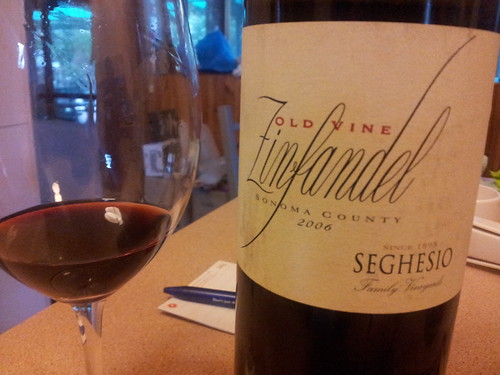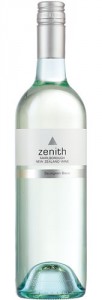I love this wine. And I probably love it for all the wrong reasons.
When I lived in Leeds I picked up a bottle from Latitude Wine. If I recall correctly, I believe it cost around £17 and, as my wine buying budget was always around the £15 mark, warranted a little bit of discussion. Wine was duly opened, tasted, with notes made and then drunk.
A few months later I was down in London to take the WSET‘s educator course. Because I was only taking the course to teach levels 1 and 2 I wasn’t expecting to have to do the guided tasting part of the assessment, so it was a surprise when I, too, had to pull a wine from a hat. My wine? The Seghesio Old Vine Zin. Even more miraculously, I actually had my tasting notes with me so I was able to refresh my memory in preparation. I suspect had I not passed the tasting exam I’d hate this wine, but I did so I have lots of happy memories associated with it.
I picked up two bottles at auction for just under $40 a bottle. The current release is the 2009 which the Seghesio website lists at $US38 so I think I got a pretty good deal here.
Zinfandel isn’t a wine that I personally associate with great ageing potential so I figured that I best crack open a bottle and see how it’s travelling.
In the glass the wine is very intense and sits somewhere between ruby and garnet.
Initially this wine was a little warm (remedied by 10 minutes in the fridge) and the whopping 15.5% alcohol was evident everywhere. However, once I’d cooled the wine down a touch, the nose was all about black fruit. Black currant, blackberry, black plum, black fruit jam, but all mixed in with a lot of spice and cedar.
On the palate, that black fruit was all there again, with some black pepper, fruit cake, chocolate and a licorice like finish with a hint of tar or tobacco. The tannins were very very soft and well integrated and there was just a touch of acidity (much needed to cut through all that rich fruit).
In educator mode, I’d like to draw your attention to the fact that all that luxurious ripe fruit (and the high alcohol) should be suggesting to you that this is a wine from a warm to hot climate. Also, don’t be fooled into thinking the wine is sweet – it does have a silly amount of ripe fruit and those flavours can trick you into finding sugar that’s just not there. This is a 100% dry wine.
The truckloads of fruit here suggest to me that I don’t need to rush out to drink the other bottle but, given the low levels of acidity and very soft tannins, I won’t be putting it away for another 6 years either. I drank this bottle on Christmas Eve and I’d envisage drinking the next one within the next year.
Wines like this make me very happy. It’s so disappointing that they’re tricky to come across in Australia.
This wine was purchased at auction from Wickmans, for $35 + 11% buyer’s premium.
Closure: cork.



